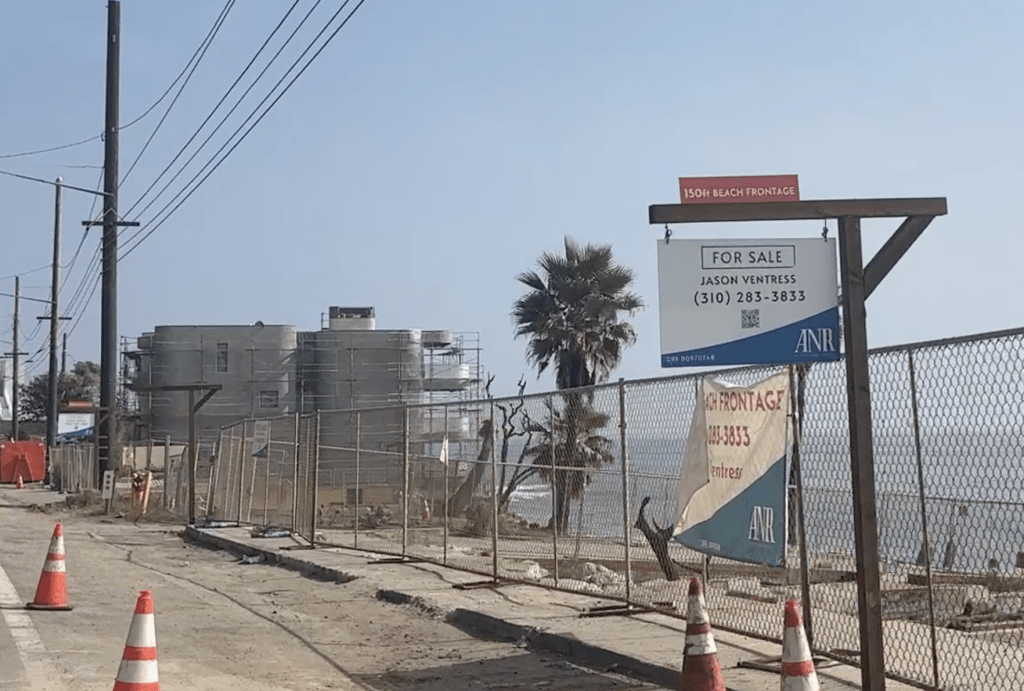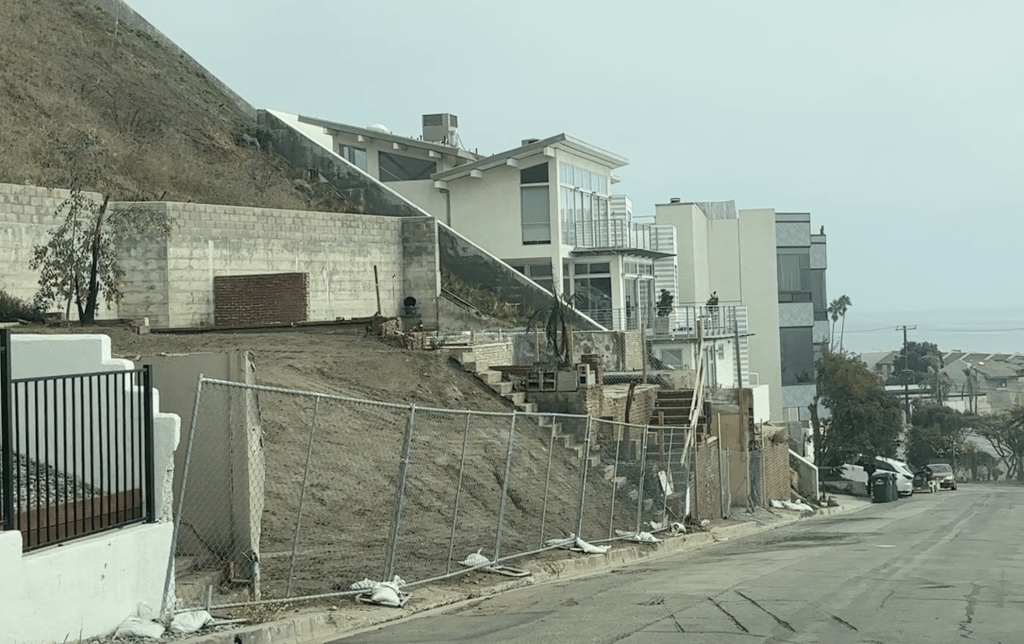“For Sale” signs line Pacific Coast Highway after the dust settles from the Palisades Fire on Oct. 26. Many people are selling their properties while others are attempting to rebuild. Photos by Emma Martinez
To sell or not to sell? That is the question for many Malibu beachfront homeowners after the Palisades Fire.
As of the week of Oct. 27, there are 78 projects under planning review with 95 rebuild applications approved by planning. In the building phase, there are 11 building permits issued, according to Malibu Rebuilds. Seven of those were approved since Oct. 22, but fire impacted areas of Pacific Coast Highway are also lined with “For Sale” signs.
Chris Frost, broker associate at Sotheby’s International Realty, said the choice to sell instead of rebuild could come from issues that are unique to Malibu.
“They [Malibu homeowners] get into a choke point at geology and engineering,” Frost said. “If they’re not pushed through the [rebuild permit] system fairly fast, they start to back up, and that’s where the problem lies.”
To combat this issue, Abe Roy, Malibu’s former fire rebuild ambassador, said a 10-day express lane permit review and approval process at the Malibu City Council meeting Oct. 28. This process would streamline what has been a grueling task for Malibu homeowners.
The process has not been approved by the City yet, Councilmember Doug Stewart wrote in an email to the Graphic. Roy said if approved, the process would aid in the community’s goal to reach 100 rebuild permits by the end of the year.
Streamlining the Permit Process
At the City Council meeting, Roy said his plan boils down to on-site action and a master checklist. Incorporating on-site action with homeowners will eliminate redundancies in the permit process.
“When you’re able to actually, physically be on-site, it’s a far more effective process to actually resolve issues real time,” Roy said.
This would not only benefit the homeowners who hope to rebuild, Roy said.
“It’s going to reduce the burden of work that exists on the city,” Roy said.
Roy said the current process includes multiple City departments that individually provide corrections and review to the homeowner and design professionals application.
“This can become very difficult to manage,” Roy said. “You’re constantly battling these corrections and changes.”
Roy’s solution: consolidate all of the departmental review and correction into a master checklist.
“This would make life a lot easier for not only the design professionals, but in fact, would actually make life easier for the City reviewers as well,” Roy said.
Both of these aspects of the 10-day review and approval process would eliminate the redundancies of the process, Roy said.
Some of these redundancies include a number of forms that collect the same kind of information, multiple forms being notarized and the unpredictability of the development portal, Roy said.
“When we set ourselves a goal like that, where you just don’t have any margin, it will naturally create the right focus and emphasis to streamline and reduce the burdensomeness of the process,” Roy said.
Stewart wrote in an Oct. 31 email to the Graphic he has read the proposal, but the matter should be discussed with Mayor Marianne Riggins for a more “consolidated” response from the Council
The Graphic reached out to Riggins via email and did not receive a response.
The Future of Malibu’s Beachfront Properties
Roy said if this plan is approved, there is hope permit approval to increase. Many homeowners decided not to pursue this path by selling, according to the LA Times.
Two New Zealand brothers bought $65 million worth of oceanfront property and real estate agents said they have seen an increase in interest from European, Canadian and Asian buyers. This has left locals worried about the identity of the city once rebuilding is in full swing, according to the LA Times.
A neighborhood overlooking Dead Man’s Curve has multiple “For Sale” signs Oct. 26. Chris Frost said his clients are the ones who decide who the property is going to.
Realtors are not involved in who the property goes to. Frost said his sellers can decide on which offers they go through, but the decision is based on numbers.
“It’s seldom that a seller knows who the buyer is, except on paper.”
Frost said realtors typically want to keep sellers and buyers apart.
“You don’t know what a seller is going to say to a buyer, or how a buyer is going to strike the seller,” Frost said.
Package ran live on NewsWaves 32 on Oct. 28.
_________________
Follow the Graphic on X: @PeppGraphic
Contact Emma Martinez via email: emma.martinez@pepperdine.edu or by Instagram: @emmamartinezreports



